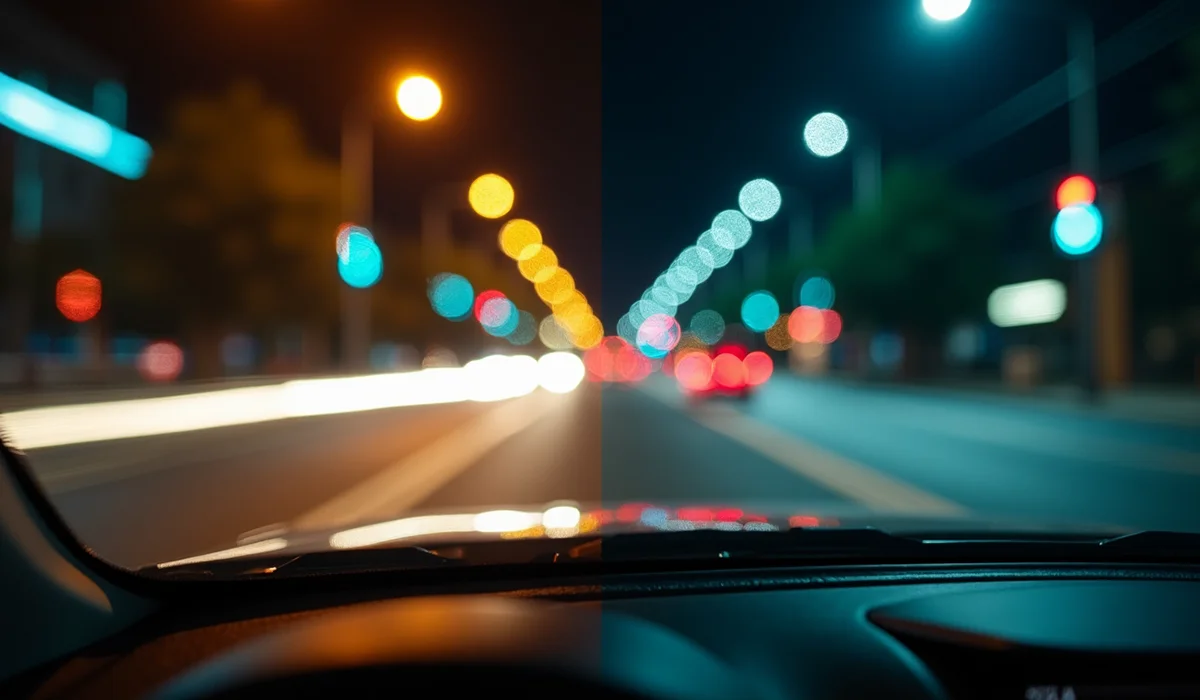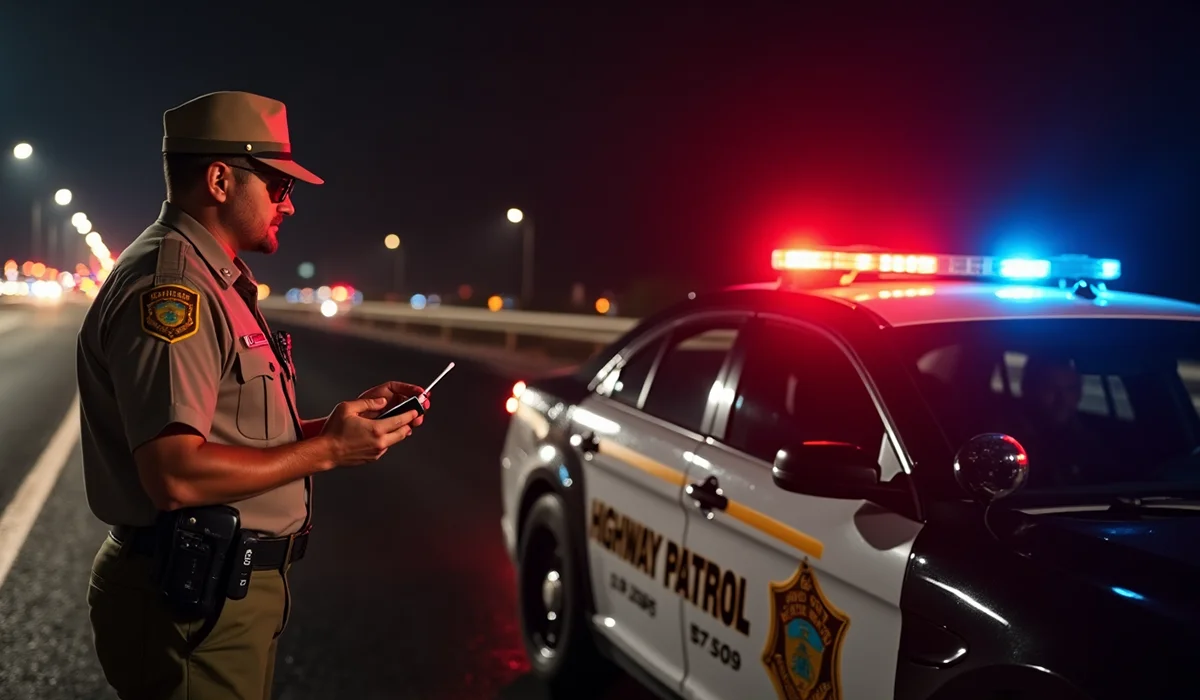Indiana’s driving laws now face a tough challenge as three neighboring states have legalized recreational marijuana. While the state has clear rules for alcohol with a 0.08 blood alcohol limit, drivers can face charges if any delta-9-tetrahydrocannabinol (THC) shows up in their system, even without signs of impairment. This zero-tolerance policy directly affects many Indiana residents who legally purchase high THC weed from other states. As drug-related driving incidents have steadily increased, lawmakers have responded by proposing new testing standards and specific THC levels. These updates aim to balance road safety with the reality that people travel between states to buy cannabis, representing a fundamental change in enforcing impaired driving laws and understanding THC levels explained.
Indiana Lawmakers Propose 5-Nanogram THC Level
“One of the trickiest things to nail down” is how Rep. Wendy McNamara describes measuring THC impairment [1]. This challenge has led to the most important changes in Indiana’s approach to cannabis-related driving enforcement, particularly concerning THC levels and potency.
How Current Law Leaves Drivers Vulnerable
Indiana’s zero-tolerance policy allows authorities to charge drivers who have any measurable amount of THC in their blood [2]. This creates problems for residents who legally use marijuana in neighboring states. THC, the primary psychoactive cannabinoid in the cannabis plant, stays detectable in the system long after its effects wear off [3]. The current regulations don’t distinguish between active THC and inactive metabolites, meaning drivers face charges even when they’re not impaired [3]. This approach fails to consider THC percentages and what is considered a high THC percentage in flower, which can vary significantly among cannabis products.
What Changes Does House Bill 1119 Bring
House Bill 1119 brings these most important changes to the state’s impaired driving laws:
- Sets a specific threshold of 5 nanograms of THC in saliva for legal purposes [1]
- Requires use of certified testing devices – specifically the Drager DrugTest 500 or SoToxa Oral Fluid Mobile Test System [1]
- Prohibits arrests based solely on test results [2]
The Indiana Statehouse has advanced this bill with a 12-1 committee vote [4]. The bill clarifies how courts can use evidence related to THC concentration. Law enforcement needs more than just test results to make arrests. They must have additional evidence like blood tests, erratic driving patterns, or failed sobriety tests to support charges [2].
State lab technicians can now provide remote testimony under certain conditions [2]. This helps streamline processes in the state’s laboratory system while maintaining proper oversight of THC testing procedures.
How Will Police Test THC Levels on Roads?
Indiana law enforcement now uses advanced oral fluid testing devices to catch impaired drivers. These officers have two main tools at their disposal – the SoToxa Mobile Test System and Drager DrugTest 500 that help them screen drivers quickly for various substances, including THC [5]. Understanding how they test THC percentages is crucial for both law enforcement and the public.
New Testing Devices Enter Indiana Streets
The Indiana Criminal Justice Institute has distributed almost 200 testing devices throughout the state [6]. These portable analyzers can detect six different drug types: cocaine, methamphetamine, opiates, cannabis, amphetamine, and benzodiazepines [7]. Recent data shows that 55% of all tests come back positive for at least one substance [6]. These devices are essential in creating a cannabinoid potency chart for law enforcement reference.
Training Requirements for Law Enforcement
Officers need detailed training before they can use these devices to test for THC levels and other substances. They must pass classroom lessons, written tests, and learn how to collect oral fluid samples [8]. Only officers who teach Standardized Field Sobriety Tests and have extra ARIDE or Drug Recognition Expert certification can train other officers [9].
Accuracy Concerns Emerge from Critics
Lab studies show different accuracy levels for each substance:
- Cocaine detection: 93% accurate [10]
- Methamphetamine detection: 97% accurate [10]
- Cannabis (THC) detection: 81% accurate [10]
- Benzodiazepines detection: 29% accurate [10]
Critics highlight reliability issues, especially with benzodiazepine testing. Cannabis detection’s lower accuracy comes from difficulty in telling Delta 8 and Delta 9 THC compounds apart [10]. Indiana law doesn’t allow arrests based just on oral fluid test results [5]. Officers must find more evidence through blood tests, signs of impairment, or failed sobriety tests [5].
Border States Force Indiana’s Hand on THC Laws
Indiana now stands alone as the only state completely boxed in by places with legal marijuana [11]. Ohio, Illinois, and Michigan allow recreational use, which creates new headaches for Indiana’s law enforcement and raises questions about cannabis potency and the THC levels of cannabis samples crossing state lines [12].
Legal Marijuana States Create New Challenges
Ohio voters said yes to recreational marijuana last November, which put more pressure on Indiana’s borders [11]. Kentucky plans to start its medical marijuana program in 2025. This will leave Indiana surrounded by states that have some type of legal cannabis [12].
Border cannabis dispensaries see lots of Indiana customers:
- Michigan’s ReLEAF Center, just eight miles from Indiana’s border, has parking lots full of Indiana license plates [1]
- Skymint dispensaries report Indiana as their number one out-of-state customer [1]
- Richmond’s tobacco shops, less than five miles from Ohio, expect more customers to cross the border for cannabis products [13]
Cross-Border Traffic Raises Enforcement Issues
Indiana State Police face bigger challenges as more residents cross state lines to buy legal marijuana [1]. Law enforcement doesn’t deal very well with jurisdiction issues – marijuana bought legally next door becomes illegal once it enters Indiana, regardless of its THC level or potency [14].
Interstate trafficking looks different now than before. Mexican groups used to move marijuana through Texas and Arizona [15]. These days, local dealers work near state borders and handle smaller amounts of cannabis products from legal dispensaries [15].
Indiana keeps tough penalties even though its neighbors have embraced marijuana legalization. First-time possession can get you up to 180 days in jail and $1,000 in fines [16]. If you’re caught again with more than 30 grams, you could face 2.5 years in prison and $10,000 in fines [16].
State police superintendent Carter acknowledges the changing landscape. He says Indiana is “pinched between four other states that have legal marijuana” [1]. But his officers focus on catching big suppliers rather than people making weekend purchases of cannabis products [1].
Courts Prepare for New THC Testing Evidence
Indiana courts are getting ready for major changes in how they handle THC-related driving cases. The state’s judicial system is adapting to new testing technologies and evidence standards, particularly concerning THC levels and potency. A THC level chart is being developed to help judges and juries understand what does higher THC mean in the context of impaired driving.
Remote Testimony Options Reduce Lab Burden
Lab technicians spent 75 hours on the road and 5 hours giving testimony in THC-related cases during 2025 [5]. Allowing these experts to testify remotely has significantly reduced the strain on laboratory resources. Court rules now permit experts to appear virtually through video conferencing as long as they follow constitutional guarantees and proper witness identification [17].
Defense Attorneys Question Test Reliability
Legal professionals worry about the accuracy of THC testing methods. Attorney Fran Watson points out that an independent audit showed 10% of marijuana tests between 2007 and 2009 didn’t meet basic scientific standards [2]. Defense attorneys now highlight several key problems:
- Chain of custody documentation
- Sample contamination risks
- Testing procedure adherence
- Equipment calibration verification
Jury Education on New Standards
Courts must educate jurors on how to interpret THC test results. Prosecutors can’t rely solely on oral fluid test outcomes to prove impairment [5]. Judges need to ensure juries understand that positive test results require supporting evidence, such as:
- Blood test confirmation
- Observable signs of impairment
- Failed field sobriety tests
- Documentation of erratic driving patterns
The Indiana Supreme Court emphasizes the need to properly validate evidence. The Department of Toxicology has implemented stricter protocols, with enhanced security measures for sample storage and detailed documentation of testing procedures [2]. These changes will help make THC-related evidence more credible in court.
Conclusion
Indiana has made one of the most significant changes to its THC-related driving enforcement laws. The state now implements a 5-nanogram limit that replaces the outdated zero-tolerance policy while maintaining road safety standards. Law enforcement officers rely on advanced testing devices that work as screening tools rather than definitive evidence for arrests.
Neighboring states with legal cannabis have pushed Indiana lawmakers to modify their approach to THC levels and potency. The new testing standards help balance road protection with the reality of cross-border cannabis use. The court system has also adapted by offering remote testimony options and improving evidence validation protocols.
These updates demonstrate the state’s steadfast dedication to fair enforcement and public safety. Indiana now follows a more balanced approach to impaired driving cases through specific THC levels, certified testing devices, and detailed court procedures. Clear standards protect both law enforcement officers and drivers on Indiana’s roads effectively, while acknowledging the changing landscape of cannabis legalization and use in surrounding states.
References
[2] – https://www.theindianalawyer.com/articles/28324-questionable-results-of-drug-tests
[3] – https://marclopezlaw.com/indiana-marijuana-dui-is-it-possible-to-be-charged-when-youre-not-impaired/
[7] – https://www.in.gov/cji/traffic-safety/impaired-driving/roadside-oral-fluid-program/
[8] – https://times.courts.in.gov/2021/01/11/roadside-drug-testing/
[9] – https://www.straccilaw.com/criminal-defense/owi-dui-marijuana-controlled-substances
[10] – https://www.policechiefmagazine.org/indiana-oral-fluid-testing-impaired-drivers/
[12] – https://indianacapitalchronicle.com/2025/01/21/will-indiana-follow-its-neighbors-lead-on-marijuana/
[14] – https://www.indyjustice.com/blog/criminal-defense/indiana-marijuana-laws/
[15] – https://www.justice.gov/archive/ndic/pubs0/660/marijuan.htm
[17] – https://rules.incourts.gov/Content/admin/rule14/current.htm





